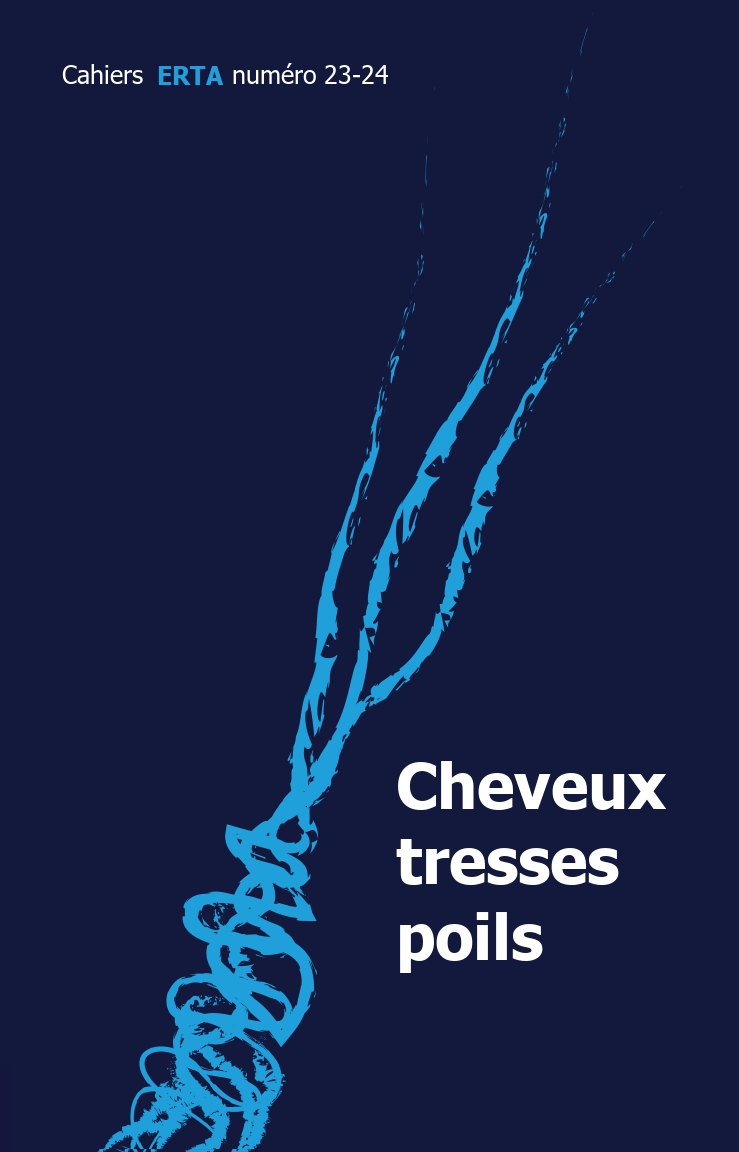Mots en cheveux. Hériter de l’histoire genrée de la broderie à travers l’écriture
Mots-clés :
broderie, écriture, genre, travaux d’aiguille, féminismeRésumé
Contemporary pieces of embroidery showing words made of human hair open up reflections upon how women artists challenge the traditional partition between the needle (for women) and the pen (for men). The article offers a synthesis on the historical construction of this gendered assignaion of needlework to women, from Renaissance to the early twentieth century. The idea of physical and moral coercion appears in the feminine history of needlework as well as in the history of the access of young women to reading and writing. Finally, if embroidery was for a long time excluded from metaphorical descriptions of literature, unlike weaving, the article ends up showing how the crossroads between writing and embroidery can be seen as a part of women’s emancipation.
Téléchargements
Références
Albert‐Llorca M., « Les fils de la Vierge. Broderie et dentelle dans l’éducation des jeunes filles », [dans :] L’Homme, 1995, t. 35, no 133.
Barthes R., Le Plaisir du texte, Paris, Seuil, 2000.
Barthes R., S/Z, Paris, Seuil, 1976.
Bernadac M.‐L. (dir.), AnneCe Messager : mot pour mot. Textes, écrits et entretiens, Dijon/London, Les Presses du réel/Violette Editions, 2006.
Bersianik L., « La Lanterne d’Aristote », [dans :] La Théorie, un dimanche, Montréal, Les Éditions du Remue‐Ménage, 1988.
Campan J.‐L.‐H., De l’éducation, Paris, Baudoin Frères, 1828.
ChrisMansen B., Knitting for Peace: Making the World A Better Place One Stitch at a Time, New York, Stewart‐Tabori and Chang, 2006.
Corbin A., « Le grand siècle du linge », [dans :] Ethnologie française, juillet‐septembre 1986, t. 16, no 3.
Dallier A., « Les travaux d’aiguille », [dans :] Les Cahiers du GRIF, 1976, no 12.
Daly Goggin M., Fowkes Tobin B. (dir.), Women and the Material Culture of Needlework and Textiles, 1750‐1950, London, Routledge, 2016.
Derrida J., « La Pharmacie de Platon », [dans :] La Dissémination, Paris, Seuil, 1972.
Dumbadze A., Hudson S. (dir.), Contemporary Art: 1989 to the Present, Hoboken, Wiley‐Blackwell, 2013.
Durham C., « The subversive stitch female craft, culture and écriture », [dans :] Women’s studies, 1990, vol. 17, no 3‐4.
Grimaud C., Aux mères et à leurs grandes jeunes filles : futures épouses, Paris, Téqui, 1923.
Iuso A., « “Ma vie est un ouvrage à l’aiguille”. Écrire, coudre et broder au XIXe siècle », [dans :] Clio. Femmes, genre, histoire, 2012, no 35.
Kelso R., Doctrine for the Lady of the Renaissance, Urbana, University of Illinois Press, 1956.
Kool C., La broderie dans l’œuvre de Tracey Emin : piquer, percer, fixer. Jouis‐sance filaire et art de l’intime, thèse de doctorat, Université Rennes 2, 2018.
Mistacco V. (dir.), Les femmes et la tradition littéraire : anthologie du Moyen Âge à nos jours, New Haven – London, Yale University Press, 2006‐2007.
Ovide, « La tragédie de Térée, Procné et Philomèle », [dans :] Les Métamorphoses, A.‐M. Boxus et J. Poucet (trad.), Bruxelles, Bibliotheca Classica Selecta (Université de Louvain), 2006.
Parker R., Pollock G., Old Mistresses. Women, Art and Ideology, London, Women’s Press, 1981.
Parker R., The Subversive Stitch: Embroidery and the Making of the Feminine, London – New York, Bloomsbury, 2010.
Pellegrin N., « Les vertus de “l’ouvrage”. Recherches sur la féminisation des travaux d’aiguille (XVIe‐XVIIIe siècles) », [dans :] Revue d’histoire moderne et contemporaine, octobre‐décembre 1999, t. 46, no 4.
Planté C., La petite sœur de Balzac : essai sur la femme auteur, Paris, Seuil, 1989.
Reid M. (dir.), Femmes et littérature : une histoire culturelle, Paris, Gallimard, 2020.
Scott J.C., La domination et les arts de la résistance : fragments du discours subalterne, Paris, Éditions Amsterdam, 2009.

 Revues scientifiques académiques
Revues scientifiques académiques





